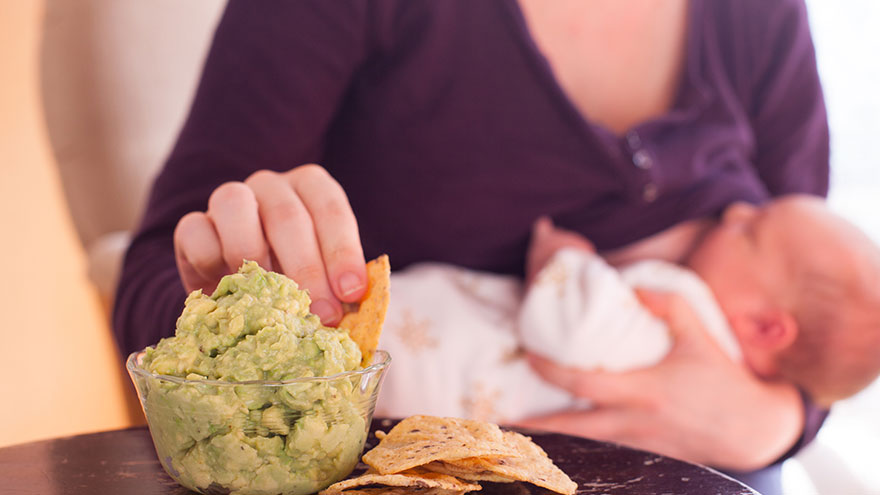How to Eat While Breastfeeding
Someday your infant might get your laugh and your dry wit, but for now she’ll get something even more important from you: the nutrients she needs to grow up strong and healthy.
Breastfeeding doesn’t require you to make drastic changes to your diet, provided your meals typically include whole grains, lean protein and fresh produce. Chocolate ice cream and pizza aren’t off-limits, as long as most of your food choices are nutritious. After all, for now you truly are eating for two.
Things You’ll Need
- Protein (meat, fish, eggs)
- Grains (bread, rice, pasta)
- Fruits
- Vegetables
- Dairy (milk, cheese, yogurt)
- Water
7 Steps to Eat While Breastfeeding

1. Drink fluids throughout the day to prevent the dehydration that sometimes accompanies breastfeeding.
Keep a glass of water on your nightstand for late-night and early-morning thirst, and drink water or low-fat milk with every meal and snack.
2. Follow a schedule that includes three meals and two or three snacks per day, or eat small meals every few hours.
Don’t snack all day because “your baby’s taking some of the calories.” In reality, a breastfeeding mom only needs 400 to 500 extra calories per day, says Mayo Clinic.
3. Eat about 6.5 ounces of protein per day.
For instance, eating two eggs for breakfast, a peanut butter sandwich at lunch, a handful of nuts as a snack and a piece of fish or chicken at dinner would fulfill this requirement.
Eat seafood regularly if possible. HealthFinder.gov suggests eating 8 to 12 ounces of low-mercury seafood like salmon and cod each week, since these foods have nutrients that encourage a child’s ability to see and learn.
4. Eat one serving or two of grains with every meal or snack, for a total of about 8 ounces each day, per MyPyramid in Action’s suggestion.
Make sandwiches with whole wheat bread, snack on pretzels or miniature bagels and eat brown rice or pasta as side dishes with dinner.
5. Include fruits and vegetables with every meal and snack, for a total of about 5 cups per day.
Wash your produce thoroughly to reduce your baby’s exposure to pesticides. Drinking juice may count as a serving of fruit, as long as it’s made with 100 percent fruit. Try eating a daily salad with a few tablespoons of salad dressing or a chopped avocado to include some healthy oils in your diet.
6. Drink 3 cups of milk each day, or get your recommended dose of dairy by snacking on a few cubes of cheese or eating a container of yogurt.
If you’re lactose intolerant, eat more calcium-rich foods like dark green vegetables and tofu to make up for the nutrients you’re missing.
7. Talk to your doctor about dietary supplements, suggests Mayo Clinic.
You may need to take vitamins B12 and D if your baby can’t get enough of these nutrients through your diet. They help with brain development and calcium absorption, respectively.
Tips & Warnings
- Caffeine is not totally off-limits for a breastfeeding mother, but drink no more than a few cups of caffeinated drinks per day, preferably right after nursing.
- You may drink alcohol while breastfeeding, provided none of the alcohol makes its way into your baby’s milk. It takes about two to three hours for a single drink to leave your system, says Mayo Clinic. So if you’re going to drink, have a single drink right after nursing and wait four hours before the next feeding, or rely on a supply of expressed milk until all alcohol has left your bloodstream.

